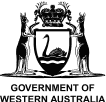Western Australia’s container port is the gateway for most of the goods entering the state and must work effectively and efficiently to safeguard our economy and livelihood. Fremantle Port has served WA well for the past 100 years and continues to operate effectively today. However, longer-term, Fremantle Port is too small and in the wrong location to support WA’s container trade for another 100 years.
Options to maintain Fremantle as WA’s main container port have been extensively investigated by Westport.
Container trade will continue to grow over the coming decades driven by population and economic growth. The key challenges of remaining in Fremantle while this growth occurs include:
- Limited land: the port precinct and surrounding land lack the capacity to support trade growth which would cripple the supply chain in future decades.
- Ageing infrastructure: upgrading the port and its transport connections to extend its life by an additional 10 years would require major, disruptive upgrades costing up to $2.2 billion. After this, a shift to Kwinana would still be necessary due to ongoing constraints.
- Road and rail limitations: Growing container truck and commuter traffic will require major upgrades, impacting properties and businesses while leaving noise issues unresolved. The single freight rail line to Fremantle Port will reach capacity by the mid-2030s, forcing more containers onto roads. Expanding rail capacity would require an underground line through an immensely constrained area, which is considered unfeasible due to costs.
- Vessel size limitations: due to its width and depth, Fremantle's harbour can only accommodate vessels carrying up to 12,000 TEU (twenty-foot equivalent unit) containers. Container ships with a capacity of up to 14,000 TEU containers are expected on shipping routes from 2030 onwards.
- Community and safety concerns: by 2051, Fremantle Port would need to accommodate more than double the current truck movements, significantly impacting congestion and liveability on key routes.
- Better land use opportunities: Fremantle Port is located on prime land and relocating container trade would unlock opportunities to re-use this land for residential, commercial and tourism purposes.
To extend Fremantle to the late 2040’s significant upgrades would be required, such as upgrades to Stirling Highway and Leach Highway, major berth reconstruction, terminal expansions, the redevelopment or acquisition of land, repurposing land and space within the port precinct, and shifting existing businesses and facilities.
These upgrades, which would be costly and disruptive over many years, would still not ultimately fix the issues facing the port in the longer term, such as the lack of available land at Fremantle, the single freight rail line, and increasing congestion.
A second tranche of even larger expansions would then be needed to get Fremantle past 2050, including land reclamation for new outer berths, major dredging, a new breakwater, and a major reconfiguration of the port infrastructure. Leach Highway and Stirling Highway would still face significant issues with congestion and delays, from high numbers of directly fronting residents and businesses, and significantly higher truck volumes as rail capacity is reached.
Westport’s analysis found shifting container trade to Kwinana from Fremantle around the late 2030s, as the Port approaches capacity across multiple fronts, provided better value for WA. This approach would reduce wasted upgrades and overall spend and allows for the development of a modern and efficient container port for WA earlier.
Moving container trade to Kwinana will also pave the way for the redevelopment of land at Fremantle Port, creating a vibrant community and homes for up to 55,000 people as WA’s population grows.
More information about the issues facing Fremantle and the process to find the right location for the new port is in our Business Case Summary.





